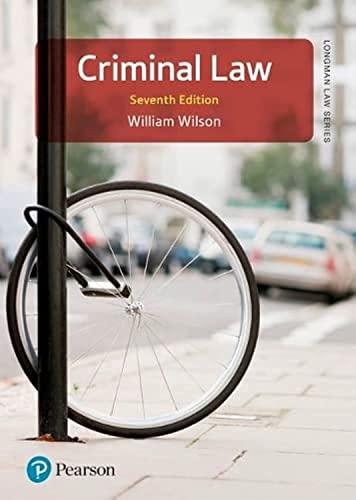Question
In June 1971, the FCC handed down its Specialized Common Carriers decision, approving in principle the entry of specialized carriers into the long distance telecommunications
In June 1971, the FCC handed down itsSpecialized Common Carriersdecision, approving in principle the entry of specialized carriers into the long distance telecommunications field, and declaring as a matter of policy that there should be open competition in the specialized services to which the decision applied. 29 F.C.C.2d 870 (1970). Because AT & T, reversing its earlier position, agreed to negotiate with MCI and other new entrants for local interconnections, the FCC elected to defer consideration of MCI's claim that AT & T was misusing its power over local telephone service to gain a competitive advantage over potential specialized competitors.
The FCC'sSpecialized Common Carriersdecision was hardly a model of clarity.[13]The decision did not define the specialized services to which it referred, nor did it define the corresponding obligations that the FCC expected the general carriers (primarily AT & T) to assume in order to assist the new carriers. AT & T contended, both at the time of the FCC decision and throughout the pendency of this lawsuit, that theSpecialized Common Carriersdecision authorized only point-to-point private line servicesnotrequiring switched network connections, and that the obligations of the Bell System extended only to providing local distribution facilities for these point-to-point private line services. MCI, by contrast, has consistently taken the position that theSpecialized Common Carriersdecision authorized it to provide FX and CCSA type services, as well as point-to-point private lines, and that AT & T had a corresponding obligation to provide it with the switched network connections required for these services. MCI also contended, both before and after theSpecialized Common Carriersdecision, that AT & T was obligated to provide it with local distribution facilities at the same rate at which AT & T provided such facilities to Western Union, under a longstanding contract between those two carriers. AT & T disagreed, claiming that the contract then in effect with Western Union did not reflect AT & T's current costs, and that the price charged to MCI for local distribution facilities should be set so as to recover AT & T's costs on a current basis.
Q1
What is the exact link between C-reactive protein (CRP) and coronary
artery disease?
Q2
In angina pectoris, why does the chest pain get radiated to the left side,
i.e. left arm and back?
Q3
Please explain why thrombolytic therapy is not indicated in cases of
unstable angina and non-ST-segment elevation myocardial infarctions
(nSTE-MI) despite the fact that both nSTE-MI and ST-elevated MI
(STEMI) are caused by a thrombus for which thrombolytic therapy is
highly indicated? Could it be true that, in the case of unstable angina and
nSTE-MI has a higher incidence of intracranial haemorrhage than in the
case of ST-segment elevation MI?
Q4
Doesn't the term 'acute coronary syndrome' include unstable angina, nonST-segment elevation myocardial infarctions and ST-elevated MI (STEMI)?
Q5
Kindly mention the indications for clopidogrel in acute coronary
syndrome (ACS). Should it be used along with aspirin or alone if the
latter is contraindicated? Are there any studies that combine both
with either low-molecular-weight heparin (LMWH) or unfractionated
heparin? How long should clopidogrel be continued?
Q6
What role do IV fluids play in the management of acute inferior wall
myocardial infarction?
Q7
Is there any benefit in combining aspirin with clopidogrel in post-MI
angina and ischaemic stroke? A MATCH trial showed this combination
Q8
In a patient with the typical chest pain of myocardial infarction (MI) and
no other criteria for thrombolysis would highly elevated cardiac enzymes
indicate thrombolysis?
Q9
I cannot figure out the role of an acetylcholinesterase inhibitor in postmyocardial infarction from Conn's Current Therapy and Swanson's Family
Practice. Can you help?
Q10
Can thrombolytic therapy for myocardial infarction (MI) be started
in patients who have cardiac pain and raised cardiac markers? Can
streptokinase be given irrespective of electrocardiogram (ECG) changes
(according to some books, ST elevation has to be present)?
5160
Step by Step Solution
There are 3 Steps involved in it
Step: 1

Get Instant Access to Expert-Tailored Solutions
See step-by-step solutions with expert insights and AI powered tools for academic success
Step: 2

Step: 3

Ace Your Homework with AI
Get the answers you need in no time with our AI-driven, step-by-step assistance
Get Started


